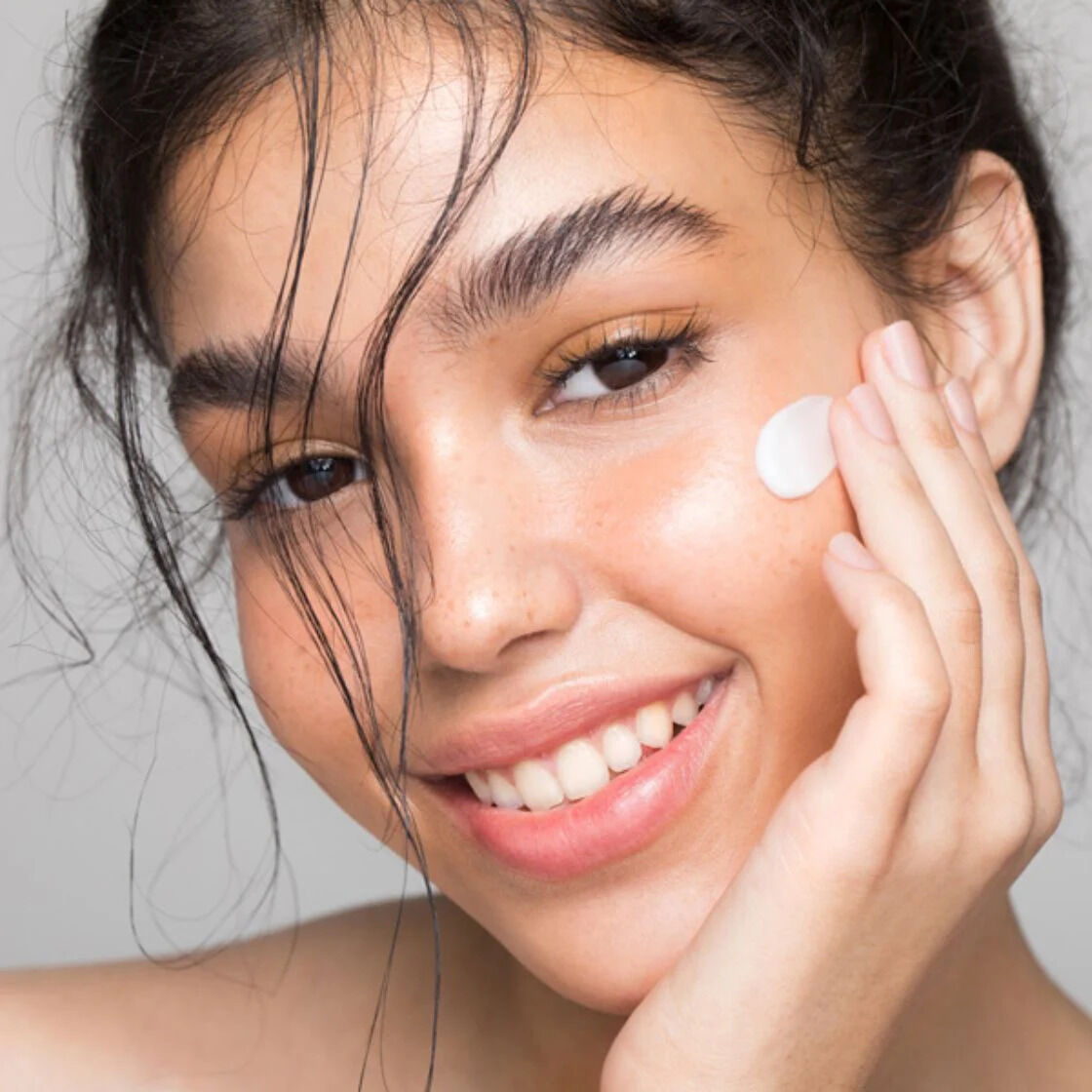
What is PA+++ in Sunscreen?
When it comes to protecting skin from the harmful UV rays, knowledge is power! There's nothing like 'too much protection' when it comes to safety from the sun. We come across many terms, such as SPA and PA ratings, printed on many sunscreen products. But, what does PA and PA+++ actually mean in skincare?
With increasing awareness about skin health, sunscreen labels have evolved to include more specific indicators, one of the most important being PA+++. While most of us know to look for SPF, the PA rating is often overlooked, despite being a crucial element for UVA protection.
In this blog, we will explore what PA+++ is in sunscreen, why it matters in your daily skincare, especially in countries with high UV exposure.

What Does PA+++ Mean in Sunscreen?
Defining the PA Rating System
- PA stands for Protection Grade of UVA, a rating system developed in Japan.
- It measures a sunscreen's ability to protect the skin from UVA rays, which cause long-term skin damage like ageing, wrinkles, and pigmentation.
- The system is based on the Persistent Pigment Darkening (PPD) method.
How PA+++ is Rated
The PA system uses a plus (+) sign scale to indicate the level of UVA protection:
- PA+: Some UVA protection
- PA++: Moderate UVA protection
- PA+++: High UVA protection
- PA++++: Extremely High UVA protection
PA+++ means the sunscreen offers high protection against UVA rays, generally a PPD value between 8 and 16. This rating is commonly used across Asia, including Japan, Korea, and increasingly in Indian skincare products.
Importance of PA+++ in Sunscreen
- Offers broad UVA protection, reducing signs of ageing and skin sensitivity.
- Helps maintain even skin tone and prevents long-term damage.
- Essential for people with sensitive or photo-reactive skin.
- Supports the effectiveness of the SPF component by covering both UVA and UVB.
- Especially beneficial during the monsoon and winter, when UVA levels remain high despite reduced sun exposure.
Effects of UVA Rays on the Skin
- UVA rays penetrate deeper into the skin than UVB rays.
They are responsible for:
- Premature ageing (fine lines, wrinkles)
- Hyperpigmentation and age spots
- Suppression of the skin's immune response
- Exacerbation of skin conditions like melasma and rosacea
- Unlike UVB rays, UVA rays are present all year round and can even pass through glass and clouds.
Benefits of Using PA+++ Sunscreen
- Offers broad UVA protection, reducing signs of ageing and skin sensitivity.
- Helps maintain even skin tone and prevents long-term damage.
- Essential for people with sensitive or photo-reactive skin.
- Supports the effectiveness of the SPF component by covering both UVA and UVB.
- Especially beneficial during the monsoon and winter, when UVA levels remain high despite reduced sun exposure.
How to Choose Sunscreens with Appropriate PA+++ Rating
When choosing a sunscreen, it's important to look beyond SPF and consider the PA rating as well. Here's how:
- Look for labels that state "Broad-Spectrum Protection." This usually indicates both UVA and UVB coverage.
- Ensure the sunscreen explicitly lists PA+++ or PA++++.
Check for key ingredients:
- Zinc Oxide and Titanium Dioxide (physical filters for UVA/UVB)
- Avobenzone, Tinosorb S, Uvinul A Plus (chemical UVA filters)
- Niacinamide and Vitamin E for antioxidant protection
Choose formulations based on your skin type:
- Dry Skin: Cream-based sunscreen with hydrating ingredients like glycerin or hyaluronic acid
- Oily Skin: Lightweight, non-comedogenic, gel-based sunscreens
- Sensitive Skin: Fragrance-free, hypoallergenic, and dermatologist-tested products
Dermatologist Recommended Option:
- Cetaphil Sun SPF 50+ Light Gel with PA+++ is a trusted product for those needing high UVA protection without irritation. It's water-resistant, oil-free, and non-comedogenic, ideal for sensitive and acne-prone skin.
Common Myths About PA+++ in Sunscreen
Understanding the meaning of PA+++ in sunscreen helps dispel misinformation that may compromise your skincare routine. Let's debunk a few:
Myth 1: SPF is enough; PA doesn't matter
Fact: SPF only protects against UVB rays. PA rating addresses UVA protection, which is crucial for anti-ageing and overall skin health.
Myth 2: PA+++ is too strong for daily use
Fact: PA+++ is ideal for everyday use, especially in areas with consistent UV exposure like India.
Myth 3: PA ratings are only for fair skin
Fact: All skin tones need UVA protection. Darker skin may not burn easily, but it is still vulnerable to pigmentation and collagen damage.
Myth 4: PA+++ is only needed during summer
Fact: UVA rays are present throughout the year, regardless of weather or temperature.
Conclusion
So, what is PA+++ in sunscreen lotion, and why should you care? In simple terms, PA+++ is your line of defence against UVA rays, the silent culprits behind skin ageing, pigmentation, and even skin cancer. Understanding this rating allows you to make informed decisions when selecting sunscreen, going beyond SPF for true broad-spectrum protection.
Whether you have sensitive, oily, or dry skin, choosing a sunscreen with PA+++ ensures you're covered from more than just sunburn. It shields you from deep, long-term damage that is often invisible until it's too late.
Key Takeaways:
- PA+++ signifies high protection from UVA rays.
- Combine PA rating with SPF for complete sun protection.
- Ideal for sensitive, acne-prone, and mature skin.
- Look for broad-spectrum, dermatologist-recommended products like Cetaphil Sun SPF 50+ Light Gel.
Don't leave your skin exposed to hidden damage. Make PA+++ sunscreen an everyday part of your skincare arsenal, rain or shine.
For a personalised skincare routine, try the Cetaphil AI Skin Analysis Tool to discover products suited exactly to your skin's needs.
Stay protected. Stay radiant. Choose PA+++ daily.
FAQs
Why is PA+++ important in sunscreen?
PA+++ is crucial because it offers high protection against UVA rays, which penetrate deeply into the skin, causing premature aging, pigmentation, and cellular damage. Unlike UVB rays, UVA is present year-round, even on cloudy days, and contributes to long-term skin issues. PA+++ indicates a PPD (Persistent Pigment Darkening) rating of 8–16, ensuring significant UVA defense. For complete sun protection, pairing PA+++ with broad-spectrum SPF, like in Cetaphil Sun SPF 50+ Light Gel is essential for healthy, youthful-looking skin.
Can I rely only on PA+++ without considering the SPF in sunscreen?
No, relying solely on PA+++ is not enough. While PA+++ protects against UVA rays, SPF (Sun Protection Factor) shields your skin from UVB rays, which cause sunburn and skin cancer. A well-rounded sunscreen should offer broad-spectrum protection, covering both UVA and UVB. Look for a product that lists both SPF 30 or higher and a PA+++ rating. Dermatologist-recommended products like Cetaphil’s Sun SPF 50+ Light Gel combine both, making them ideal for comprehensive protection.
Is PA+++ suitable for all skin types?
Yes, PA+++ is suitable and recommended for all skin types, including dry, oily, combination, and sensitive skin. Everyone is vulnerable to UVA-related skin issues like pigmentation, photoaging, and collagen breakdown, regardless of skin tone. However, the formulation of the sunscreen matters. For instance, individuals with sensitive or acne-prone skin should opt for non-comedogenic, fragrance-free sunscreens like Cetaphil Sun SPF 50+ Light Gel, which offers PA+++ protection without irritating or clogging the skin.
How often should I reapply sunscreen with PA+++ protection?
Even with PA+++ protection, sunscreen should be reapplied every 2–3 hours, especially if you're outdoors, sweating, or exposed to water. PA ratings do not measure duration, so reapplication is essential for consistent UVA protection. Apply it generously 15 minutes before sun exposure and touch up throughout the day. For daily convenience, opt for water-resistant, non-greasy formulations like Cetaphil’s Sun SPF 50+, which makes reapplication easy and suitable even for humid or monsoon weather.
What is the highest PA rating, and is it always necessary?
The highest PA rating is PA++++, which offers extremely high UVA protection with a PPD value of 16 or more. While PA++++ is ideal for intense sun exposure or sensitive skin, PA+++ is sufficient for most daily environments, especially when paired with SPF 50 or higher. Unless you have photosensitivity, hyperpigmentation, or spend extended time outdoors, PA+++ provides robust protection. Choosing dermatologist-approved products like Cetaphil Sun SPF 50+ Light Gel ensures a balanced level of coverage.




